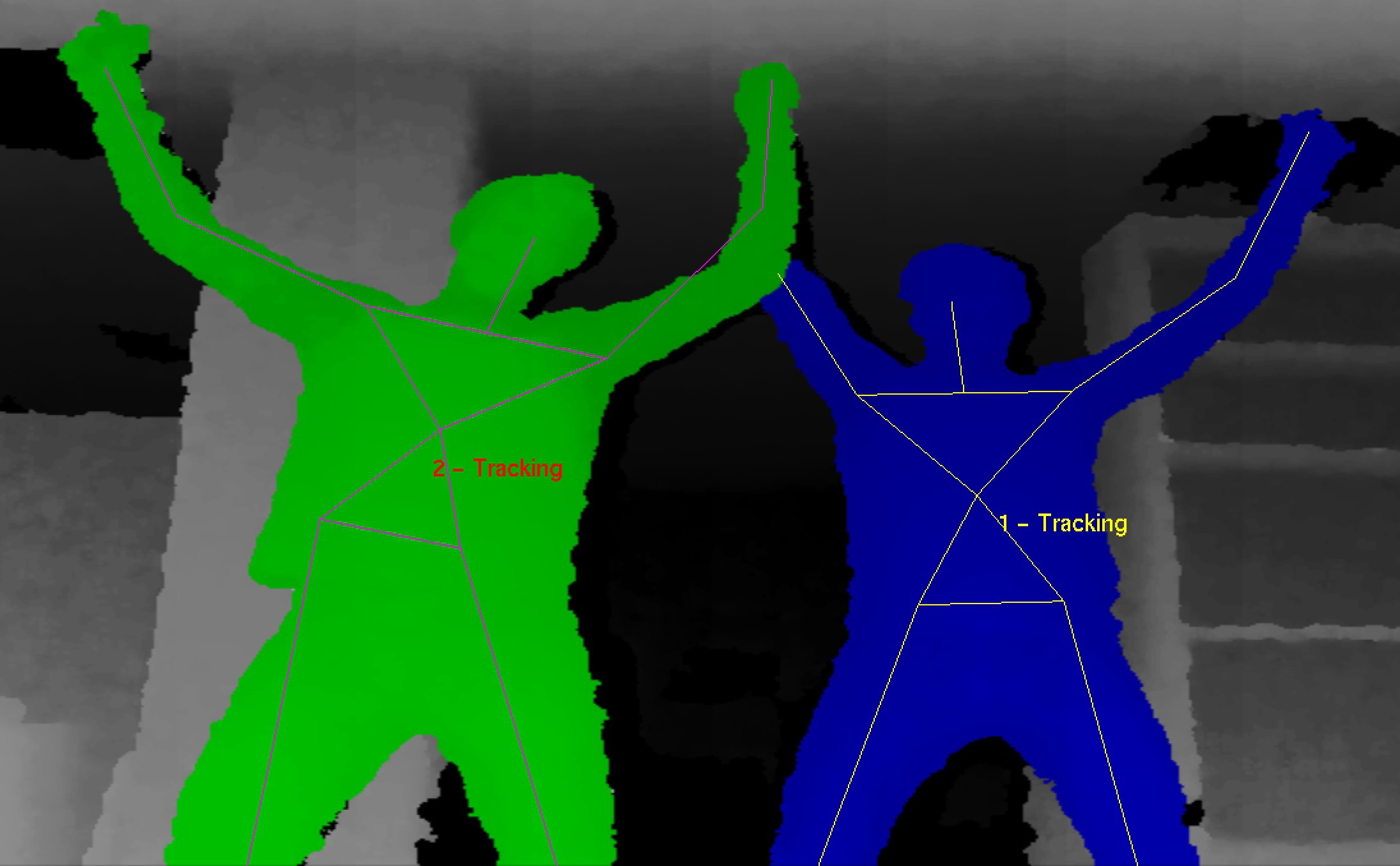Life of the Party
Team: Justin Fraumeni, Mat Johnson, Amelia Keller, Jeremy Warner
Light systems for live entertainment are traditionally rigid in design. For dance shows and concerts, light schemes are often pre-programmed scene by scene to synchronize with the energy of performances, a process that can be as inflexible as it is time-consuming. Lighting for party environments often reacts to music levels but can be repetitive and predictable. Through the creation of “Life of the Party”, we hope to create a system that will automatically respond to movement in a predefined space and change lighting levels to correspond with motion, adding a layer of real-time human interactivity to entertainment events. Our software is novel in its design and application, and more flexible and interactive than other lighting systems currently available on the market.
Materials
System Overview

The system is implemented with three hardware components: The Kinect outputs its position and depth metrics to a computer hub containing the program files, scripts, and libraries through a high-speed USB connection, at an update rate equal to the Kinect’s frame rate of 30 fps average. The computer hub then sends update commands to the SakioLEDs through their self-generated, dedicated wireless network.

- SaikoLED: The custom-built SaikoLED lights provide full spectrum RGB color and utilize an integrated Arduino microcontroller to generate a wireless network, through which color can be manipulated.
- OpenNI SDK: OpenNI is an open source C++ image processing library which can be used to interface Xbox Kinect with Unix-based systems. OpenNI provides access to the euclidian coordinates of 15 “joint” data points on up to 6 concurrent users within the Kinect’s view field.
- Kinect: Kinect is a motion sensing device originally designed for use with the Xbox 360 platform. The Kinect features an RGB camera and depth sensor, which it uses to track the full body movement of multiple users in three dimensions. Critical to our application, the depth sensor utilizes an infrared laser and CMOS sensor, making it work in lower light conditions.
- Python Liblo: Liblo is an implementation of the Open Sound Control protocol for POSIX systems. We use pyliblo, an implementation in python, to communicate between the laptop hub and the SaikoLEDs.
Acknowledgements and thanks to Event Support, Louvre Dance Group, ROC HCI, Alex Wilson, Prof. Hoque, Michelle Fung, Computer Science Department, Open Source Software and Firmware (Arduino, SaikoLED, OpenNI). Thank you!
← Back